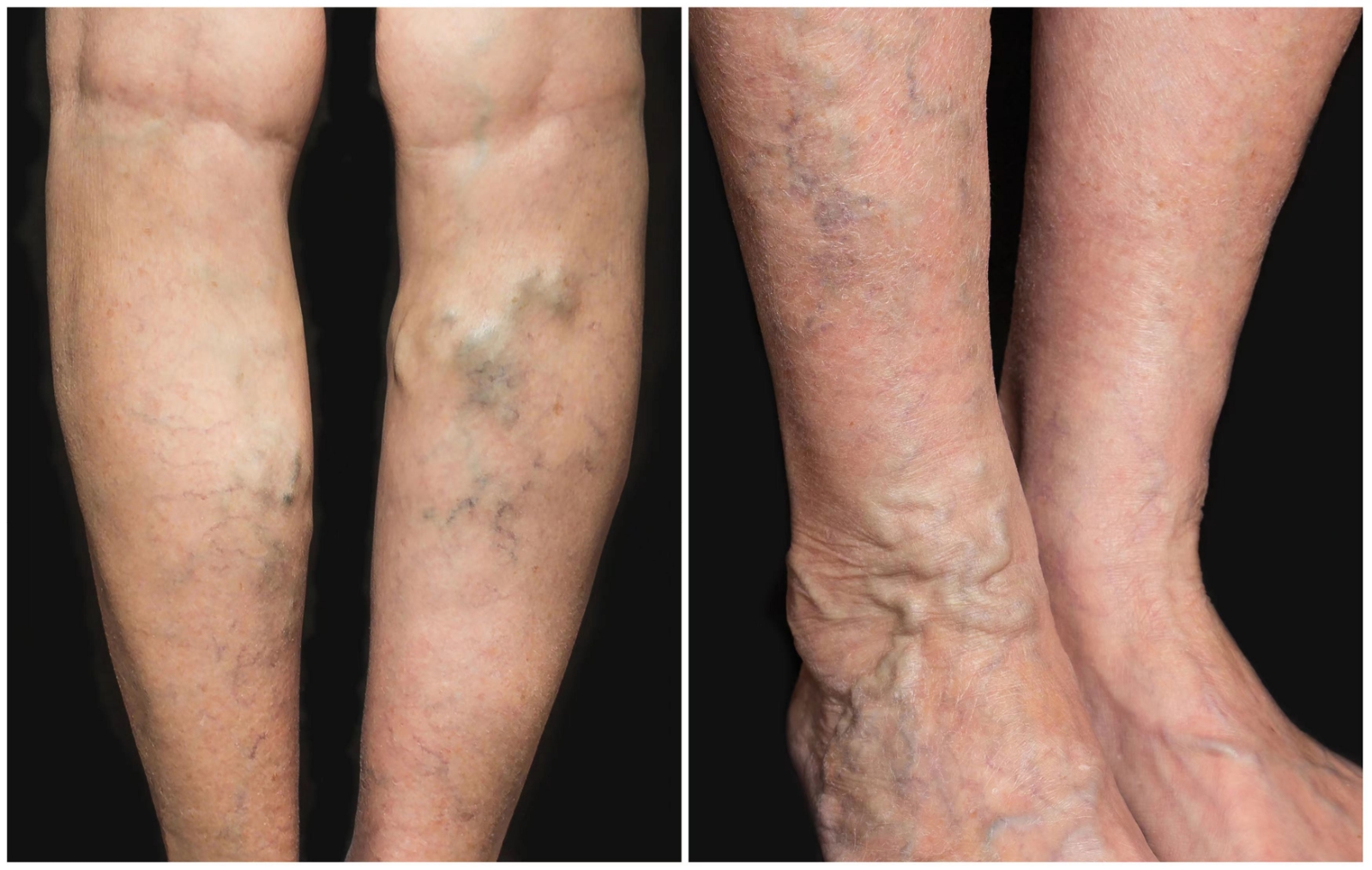| Overview Varicose veins are the large, visible, and bulging leg veins under the skin. They arise due to the weakness of the vein wall because the vein valves no longer work. Under the pressure of gravity, these veins can continue to expand. The veins may become bigger, thicker, and painful. Symptoms Varicose veins may not cause any pain. Signs you may have varicose veins include: veins that are dark purple or blue in color, veins that appear twisted and bulging; they are often like cords on your legs, when painful signs and symptoms occur, they may include: an achy or heavy feeling in your legs, burning, throbbing, muscle cramping and swelling in your lower legs, worsened pain after sitting or standing for a long time, itching around one or more of your veins, skin discoloration around a varicose vein. Spider veins are similar to varicose veins, but they’re smaller. Spider veins are found closer to the skin’s surface and are often red or blue. Spider veins occur on the legs, but can also be found on the face. They vary in size and often look like a spider’s web. |  |
Ablation using radiofrequency (F Care Systems) is a safe and minimally invasive procedure. The catheter can easily be localised using ultrasound and followed from ankle to groin. The procedure is usually done on an outpatient basis, under local anaesthesia and completed within an hour. Only a small nick in the skin is required to insert the catheter which does not need stitches. This procedure leaves virtually no scars. Cosmetic result is much appreciated by patients. Actual closure of the vein with heat is not painful. After treatment patients wear compression stockings but they may resume their normal activity immediately. Most ablation catheters cannot easily pass through a vessel with many turns and bends but the F Care Systems Veineo? catheters can take a turn without perforating the vein. On top of that the tip of the catheter can be bent to navigate through the vessel when a stenosis or a turn needs to be passed. Especially for the perforator vein ablation, the versatility and suppleness of the catheter is a great asset.
Dr. Sabrina Speybrouck, vascular surgeon, Aalst, Belgium
Witold WO?NIAK, Maciej KIELAR, R. Krzysztof MLOSEK, Piotr CIOSTEK
International Angiology 2018 December; 37(6):457-64
DOI: 10.23736/S0392-9590.18.03954-8
Vascular OnlineFirst, December 12, 2014
DOI: 10.1177/1708538114564462
Jun-Yi Ryan TAN, Zhiwen Joseph LO, Pravin LINGAM, Qiantai HONG, Enming YONG, Sadhana CHANDRASEKAR, Glenn Wei Leong TAN
ARC Journal of Surgery, Volume 4, Issue 3, 2018, PP 5-10, ISSN 2455-572X
DOI : 10.20431/2455-572X.0403002